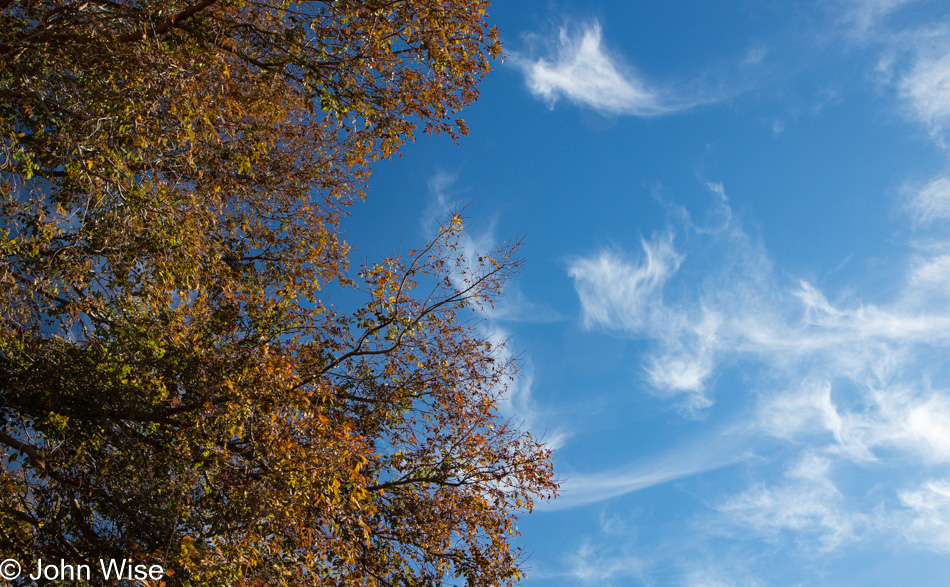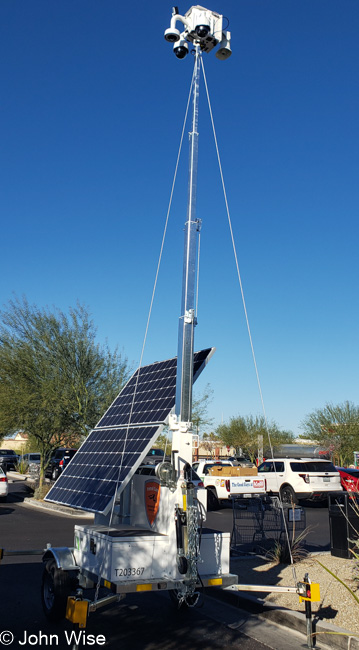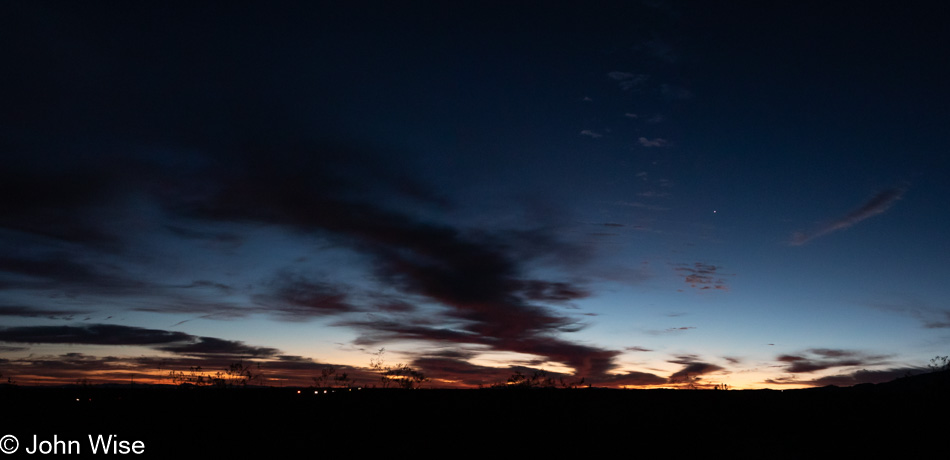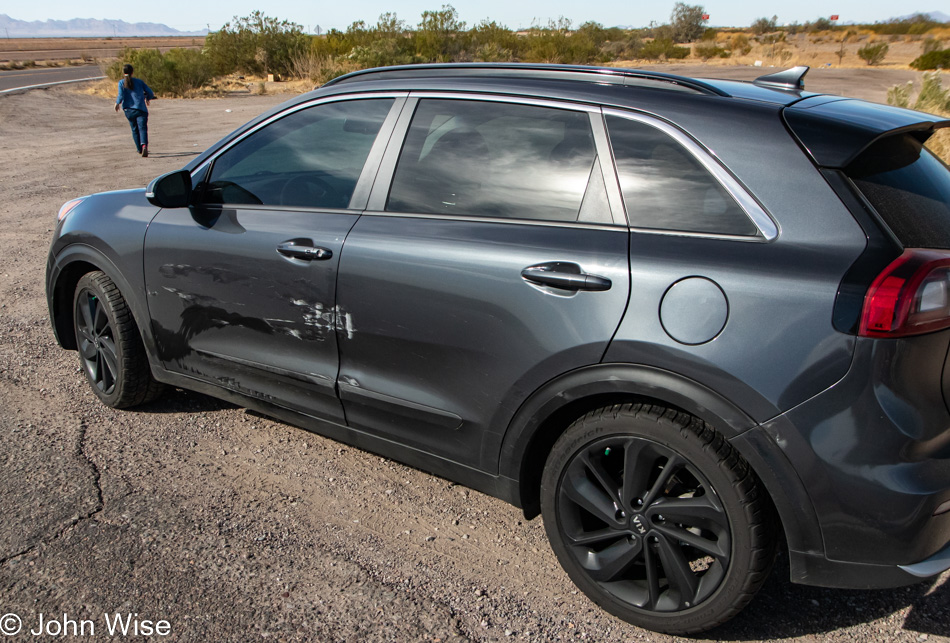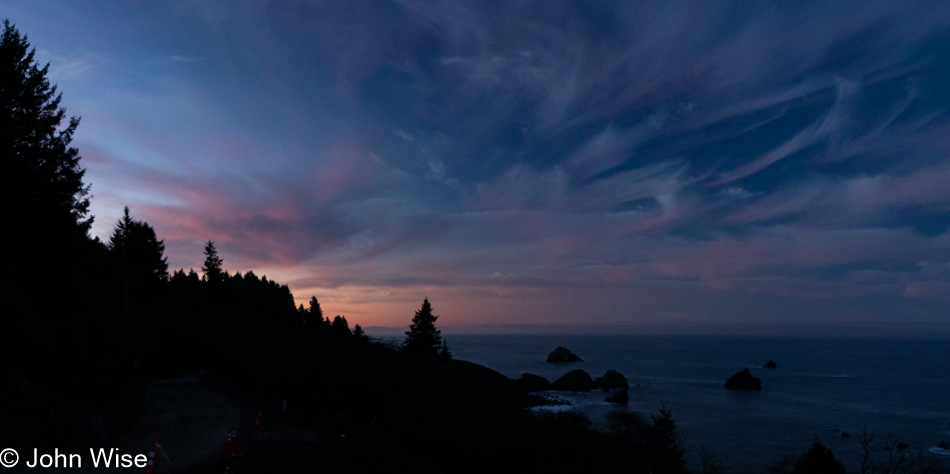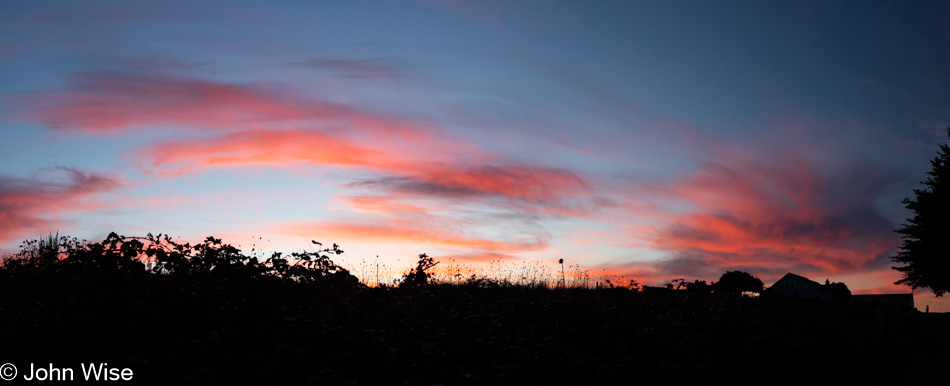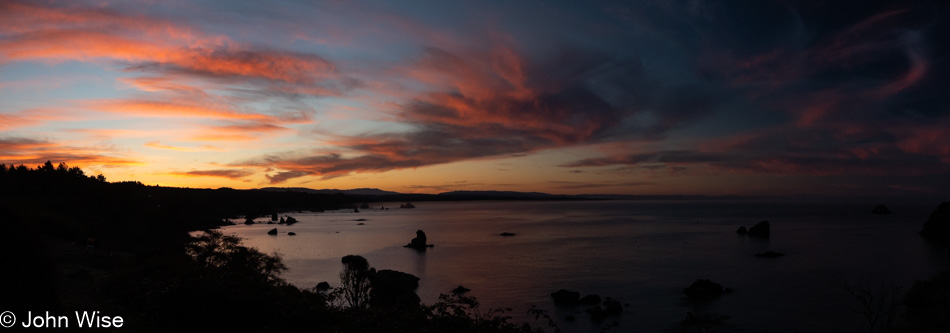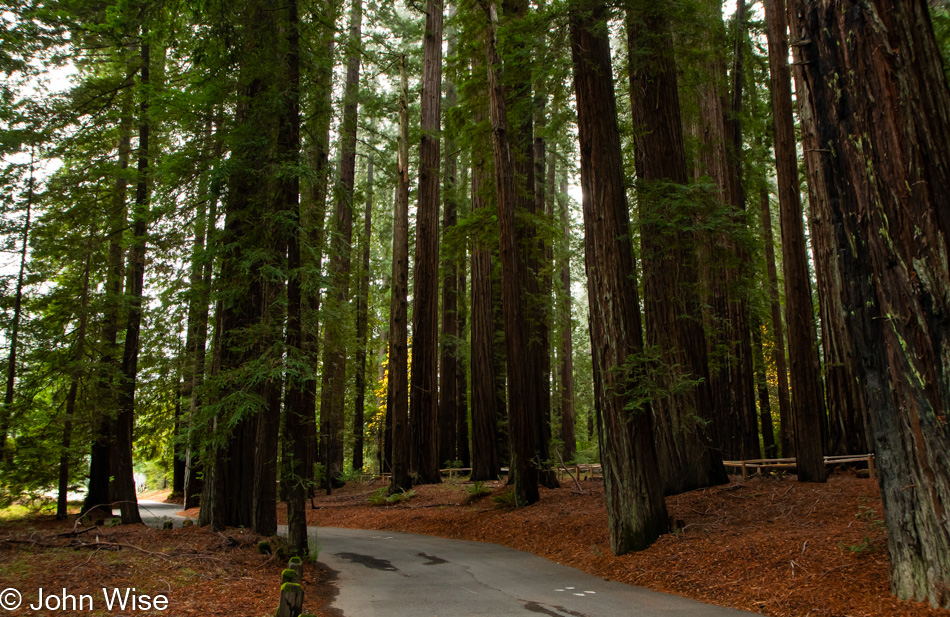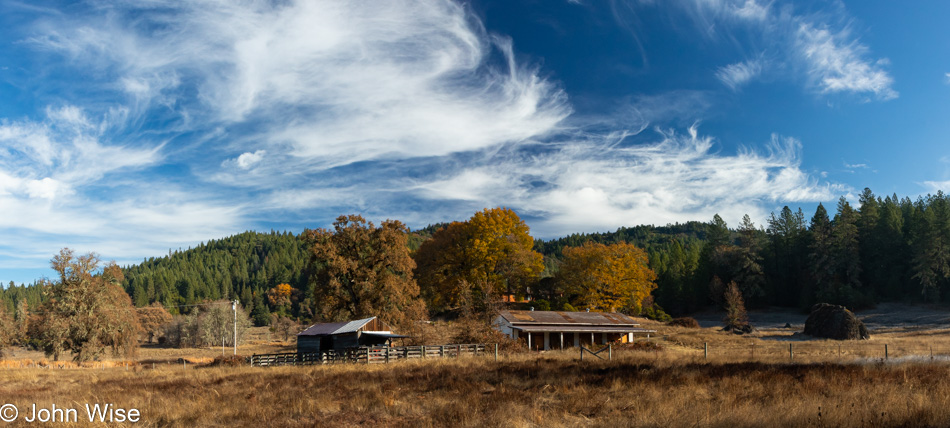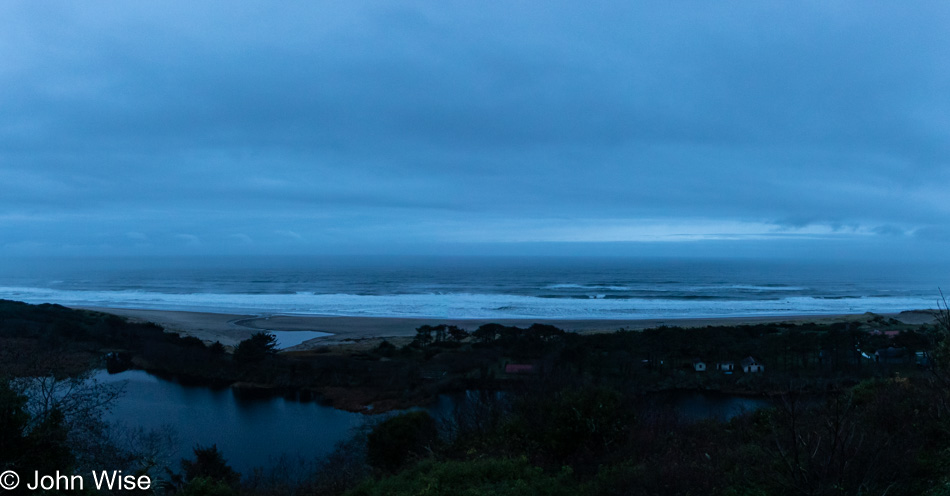
Heavy, gray clouds obscure the bright blue sky above, but it’s a better view than we were experiencing the first hour of driving south when all was black. Our first photographic pullout is the Winema Lake Viewpoint in Neskowin. When the roads are wet, narrow, and winding, and the sky is dark, the path feels precarious and is only made more so by those who race up behind us, familiar with its contours and obviously annoyed at the person impeding their move forward. I’d like to claim that we were driving slowly to savor our dwindling time out here on the coast, but it was dark, and in any case, we intended to leave in the dark as we’d covered this part of the coast yesterday. Now it’s time to really slow down and take things in, even if the people behind me are shaking their fists in a futile effort to get me to step on the gas.
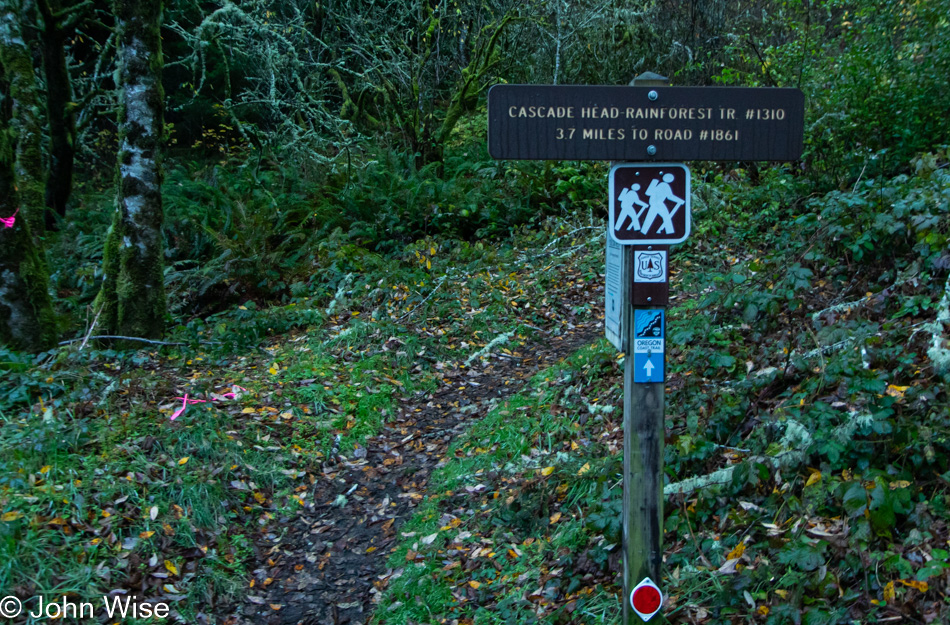
Dreams awaken soon with our first pitstop at a discreet corner, where we find this sign leading us to a part of a trail we’ve not hiked yet. I’m posting this as a hopeful reminder that while we’ve hiked the other end of the trail at Cascade Head, we’ve not walked this 3.7-mile (6 km) rainforest trail. Something new already for next time.
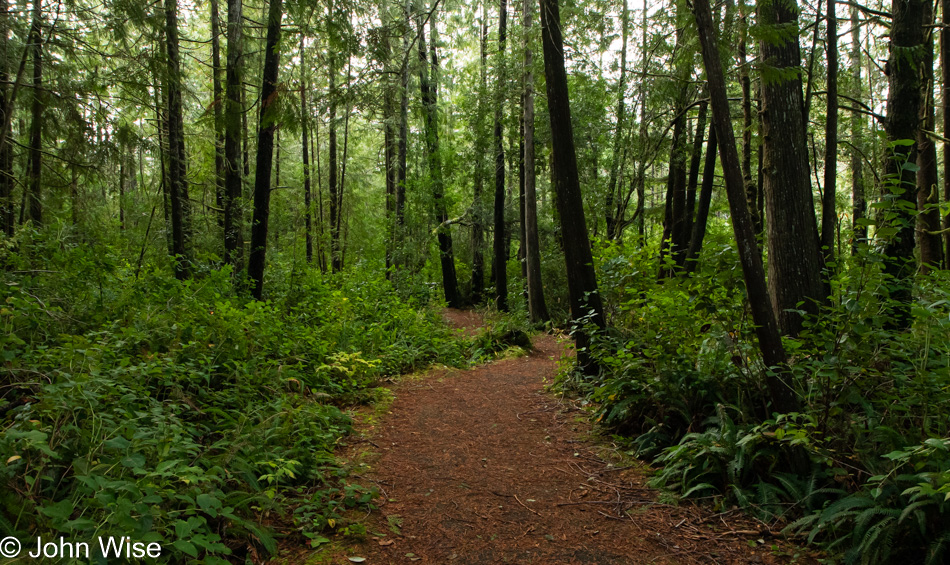
I must admit a bias while on Highway 101 driving north or south: what is on the west side of the car holds the most interest for me. On the west side of the car, the giant Pacific Ocean is to be found. On the east side of the car are more homes, businesses, forests, lakes, rivers, and boring stuff. Well, until Caroline spots this sign for the Darlingtonia Wayside. First of all, a wayside is nothing like a State Park and is certainly 1,000 miles away from being something similar to a National Park; it is a lowly wayside. Except, this wayside is a spectacular one because it has an enchanting forest trail over to this Darlingtona thing it is pulling our attention into…even if it is on the east side of the road.
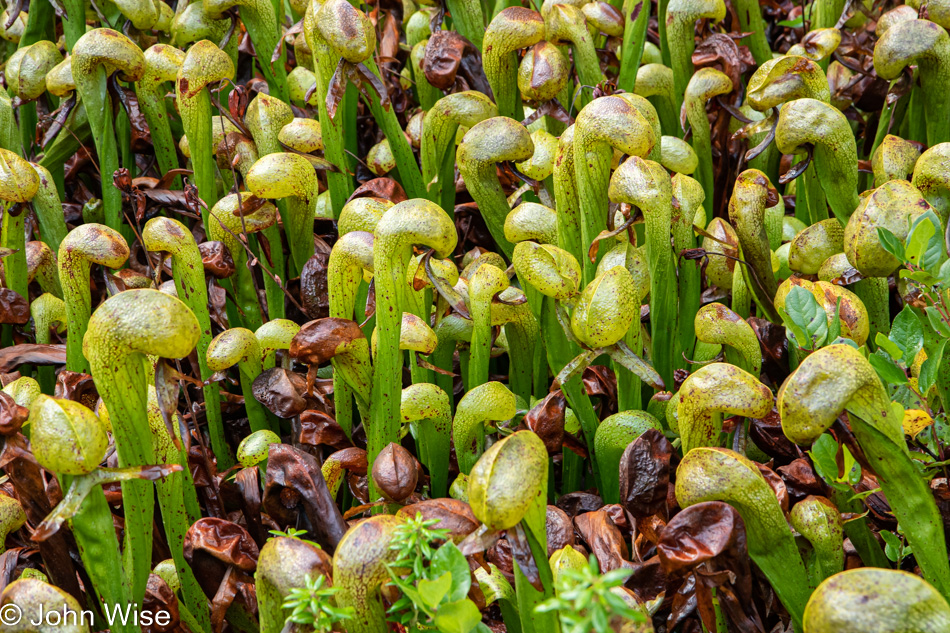
Witness the cobra lily, aka the Darlingtonia. Then, like a cobra striking its victim, engaging in further research on my quest to learn more about this plant, I find that the location has a new designation not yet reflected in the signage of the wayside. It is now all grown up and has become the Darlingtonia State Natural Site. I stand corrected about the meek value of this place and am in awe of the mighty Darlingtonia plant.
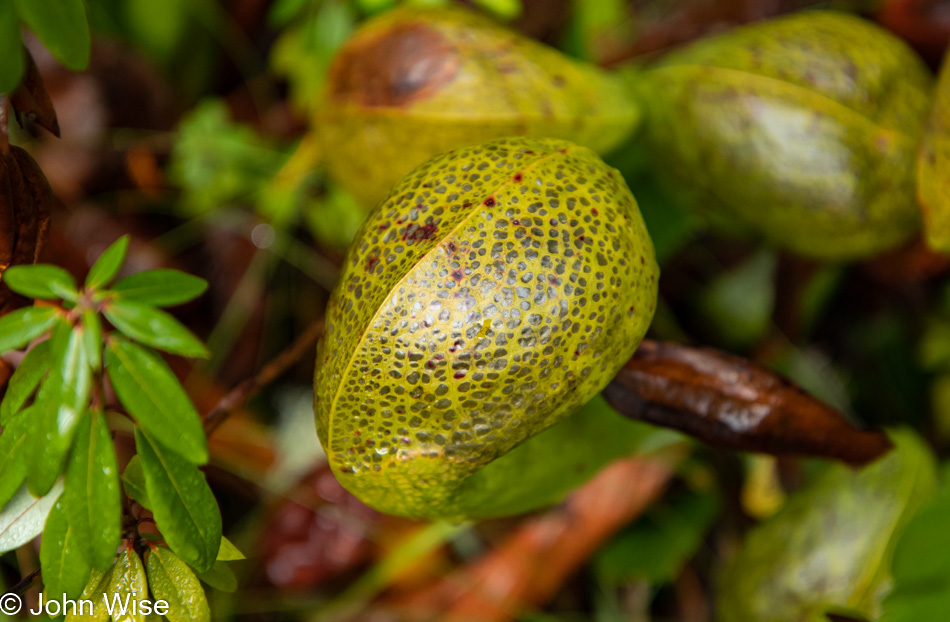
I think I heard them murmuring, “Nom nom nom” as we stood on the platform overlooking them: they are meat-eaters. Maybe they eat insects, maybe they eat flesh? I asked Caroline to climb over the banister for a closer look and see if they had a nice scent, but she refused. Maybe she knew what evil might lurk in my cold heart?

This is familiar, yet not, and that’s because we are not looking at the boat dock that I’ve photographed dozens of times already. We are looking north on the Umpqua River in Gardiner.
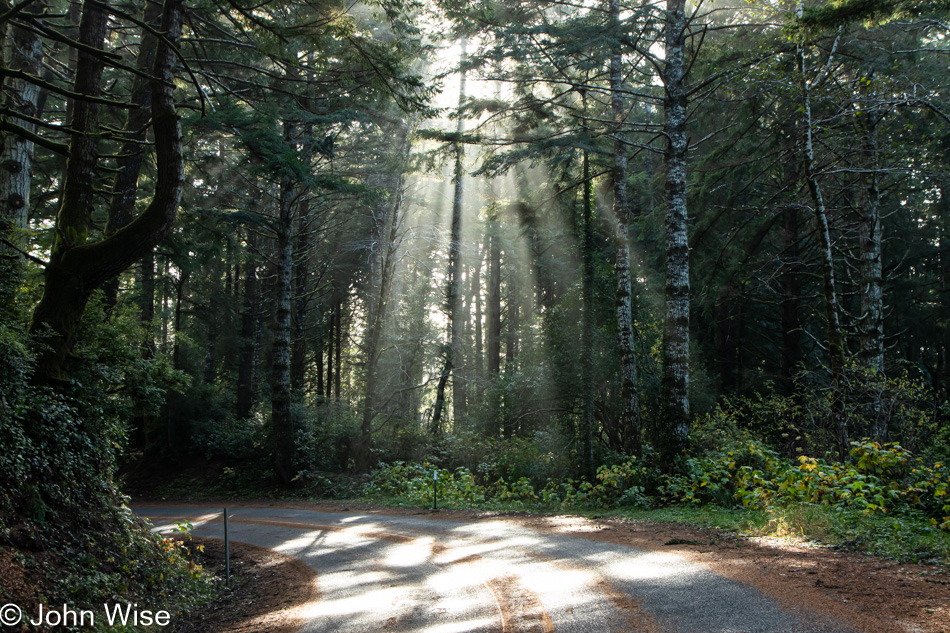
During this late fall Oregon road trip, we learned early on about the pleasures of our seat warmers. Having them in Arizona seemed like a weird indulgence when we bought the car back in December 2018, and last year’s trip up here was had when we were still flying places so our own car wasn’t present. This brings me to another luxury we eschewed in our old Prius: the maps on the dash screen. This time around, we’ve grown somewhat accustomed to looking at the maps instead of purely relying on our phones and this has proven to have great utility. By zooming in on the map so that it moves along with our driving, we are able to spot small side roads that don’t appear in a wider overview of the route. Seeing those small roads approach, we can move around on the map to see if there’s a connection to our highway further ahead or if we’ll have to turn around. This road pictured is called Wildwood Drive and winds its way along the 101 for about 2 miles. It’s a beautiful little path in the woods south of Reedsport.

The next small road led to Saunders Lake and brought us to a fork in the road that, while a dead end, we decided to drive in any way just to see what was out along it. Houses and cabins were about it.

And this old train track that’s grown over and rusting.
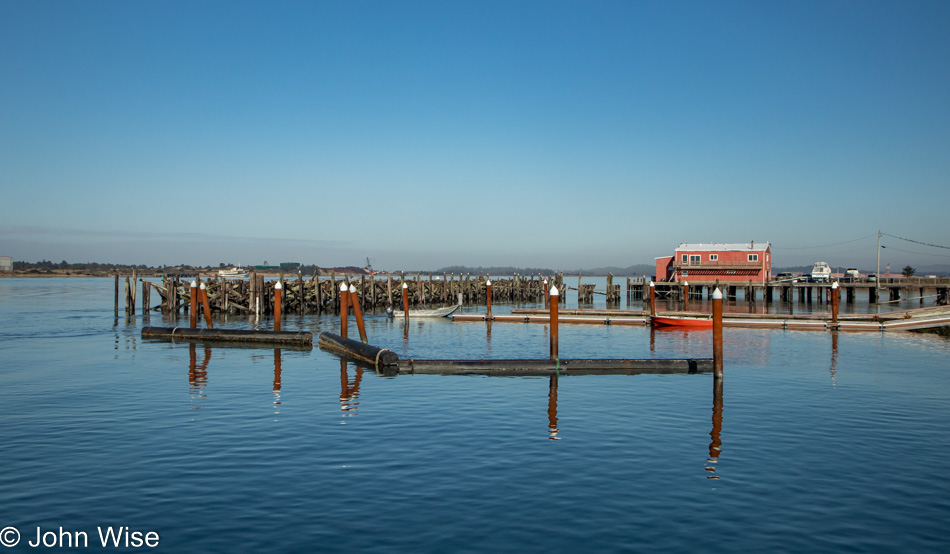
Arriving in North Bend, we are now 188 miles (302 km) south of where we woke this morning and more than halfway down the state of Oregon.
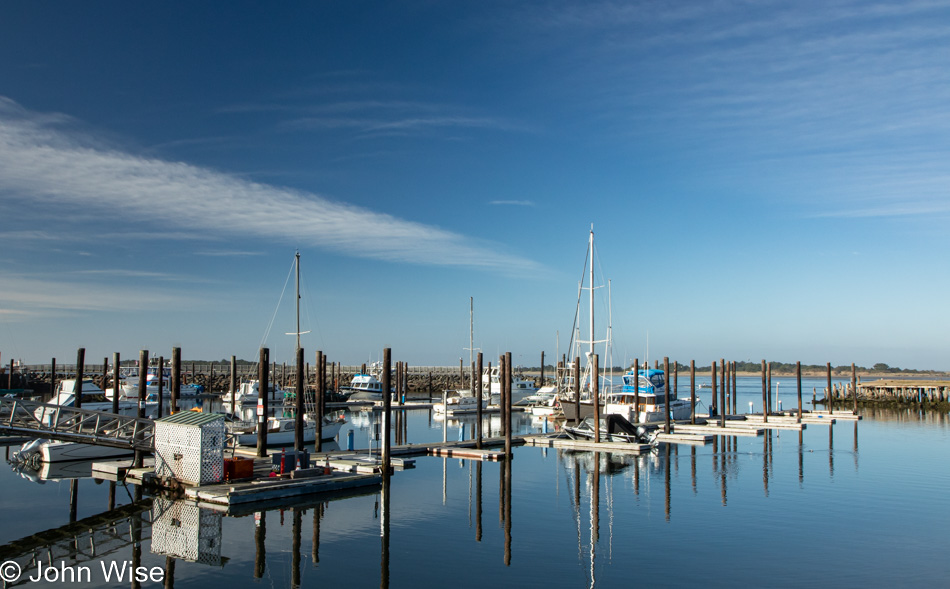
A few minutes later, we seamlessly merge into Coos Bay, the largest city along the coast with a population of 16,415 (I think I shared this last year, too), but we are not sticking around long. The yarn store Caroline wanted to visit is closed, though it’s supposed to be open, and then on the way out of town, she spots a burger spot that she says we’ve enjoyed before. Lunch was had at the Shake N Burger, and sure enough, upon getting home, Google’s timeline showed me that we last visited the place on November 25, 2019. I may not share it a lot here, but Caroline’s memory is impeccable; it’s a trap where nothing escapes, except where she just set something down a few minutes before.
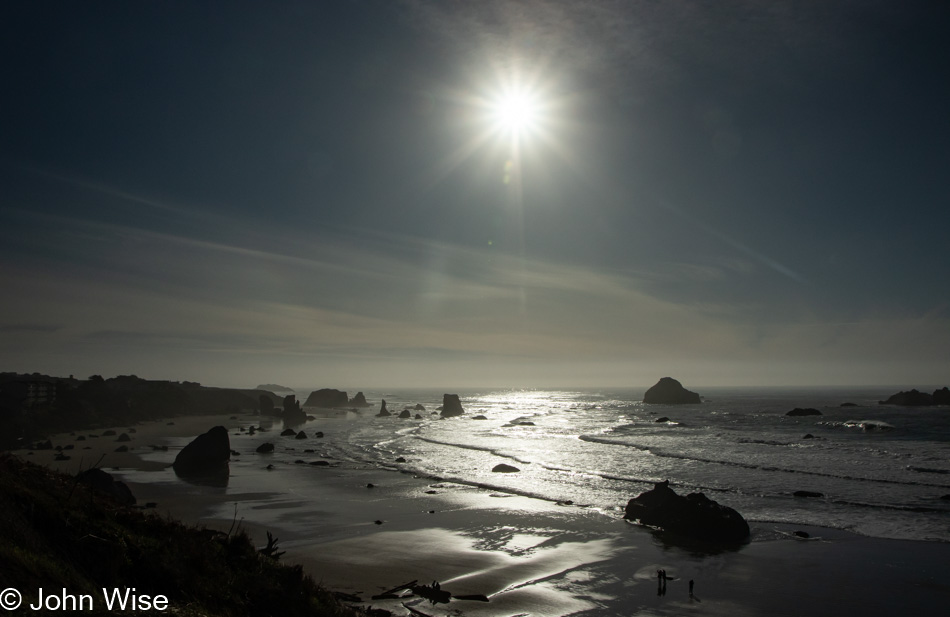
Bandon has one of the greatest rocky coastlines in all of Oregon. It’s no wonder that this place has taken on a kind of luxury vibe akin to Cannon Beach, 231 miles north.
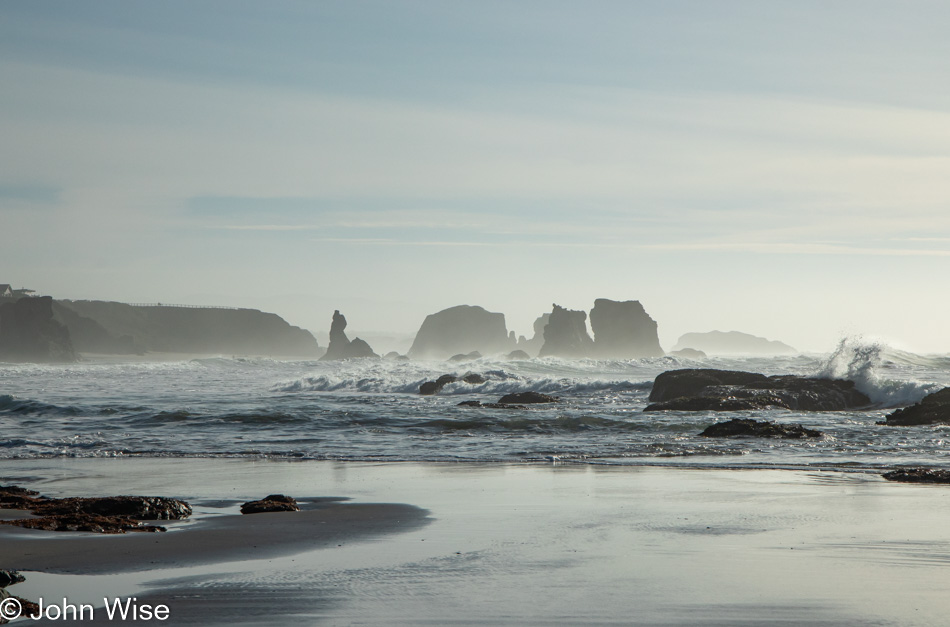
Sure, we’d like to live here in retirement, but you’d have to be a millionaire these days to put roots down in Bandon. In November, the average sale price of a home in this area was $422,000, which, with utilities, insurance, and maintenance, is going to cost about $2,100 a month, while rents are not that much lower. Fortunately for those wealthy enough to call this place home, they have a workforce of nearly 30,000 in the area just north from which they can pull in labor.

Horseback rides at sunset among the monoliths are one of the amenities of life on this corner of the southern end of the coast. I shouldn’t be too whistful as at least Bandon hasn’t turned into the famous 17-mile Drive in Carmel By The Sea that charges people for the right to pass through.
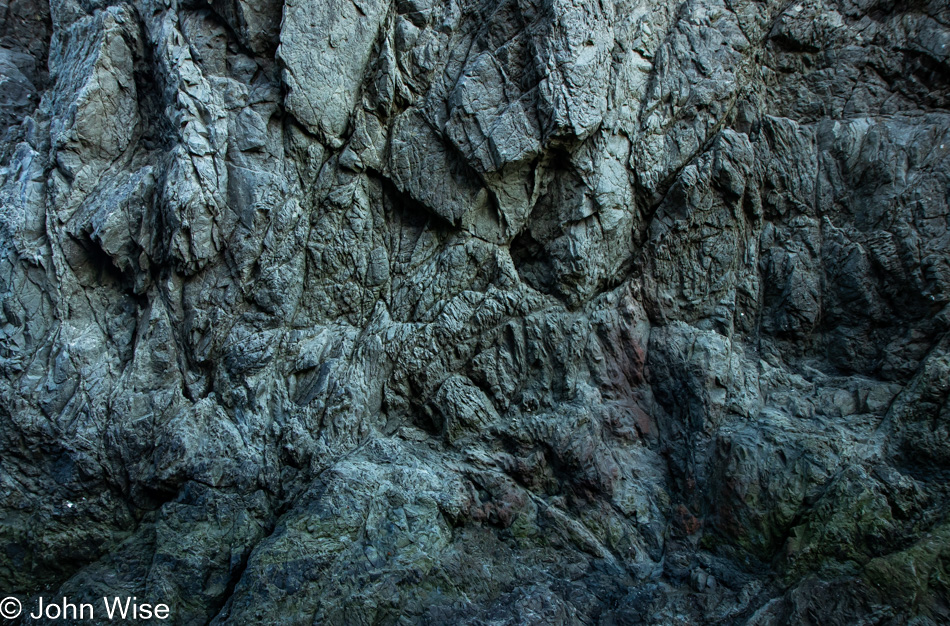
The tide is seriously low today, offering us a great look at rocks we’ve not been able to see before.
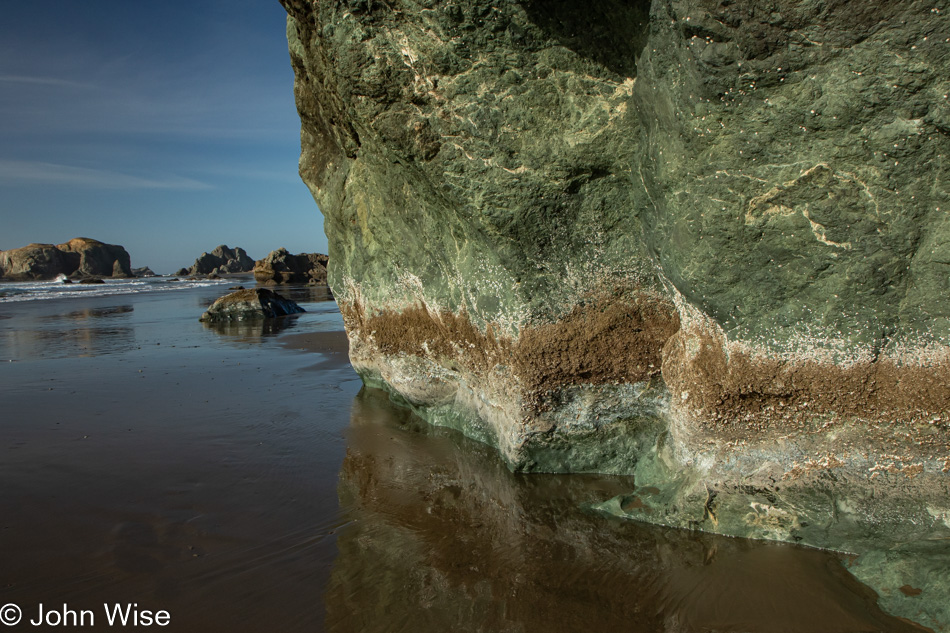
More evidence of our mad-dash race to collect more experiences here on our last day on the coast.
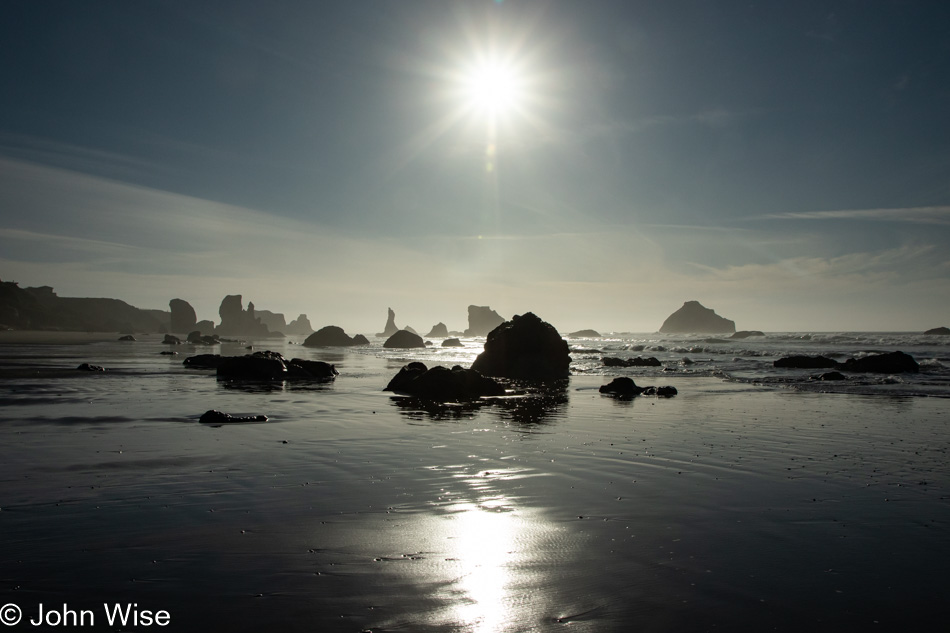
By now you should see the attraction of what has drawn so many people to Bandon. Besides the cold, blustery days of winter, there’s the issue of heavy fog in the summer, but by and large, the coast of Oregon is our dream climate. It’s probably a good thing we’ll not be making this home as it can forever remain the fairy tale place where, for a week or two a year, everything is perfect.
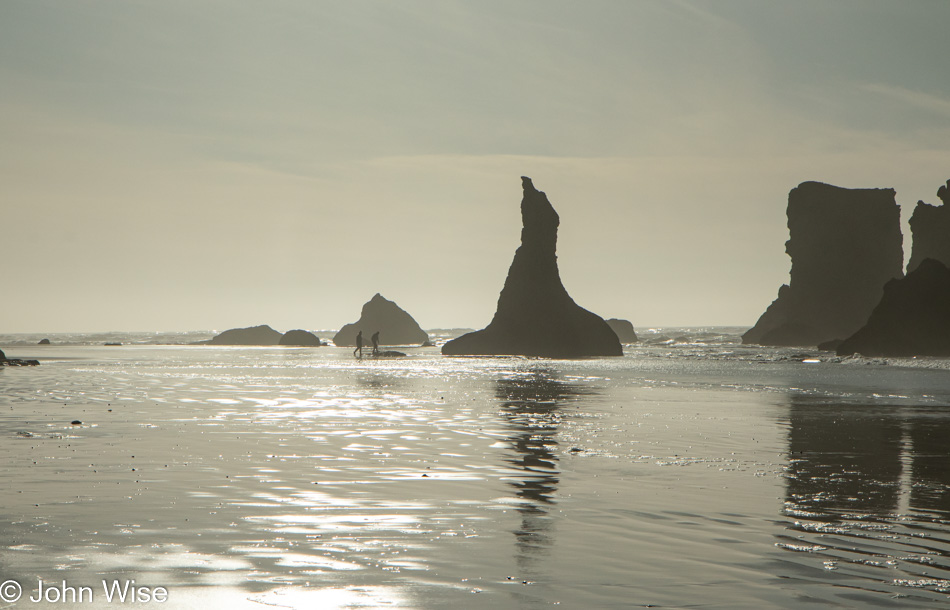
I’m pretty certain we’ve seen this witch’s claw of rock before, but I can’t be certain. Maybe part of it broke off in between visits and it is only now this shape? Out of curiosity, I searched Lightroom for all photos that have been tagged “Oregon,” though I can’t be sure I’ve done the best job tagging them, and I see that I have 19,623 images to look through to make an accurate determination if this has already been seen. Well, today, it is one more detail to throw in the grab bag of blogged-about memories, hoping that it might be part of the magic key so that when I look at these images again in some years, the whole picture of where we’ve been and what we’ve done will all snap into focus.
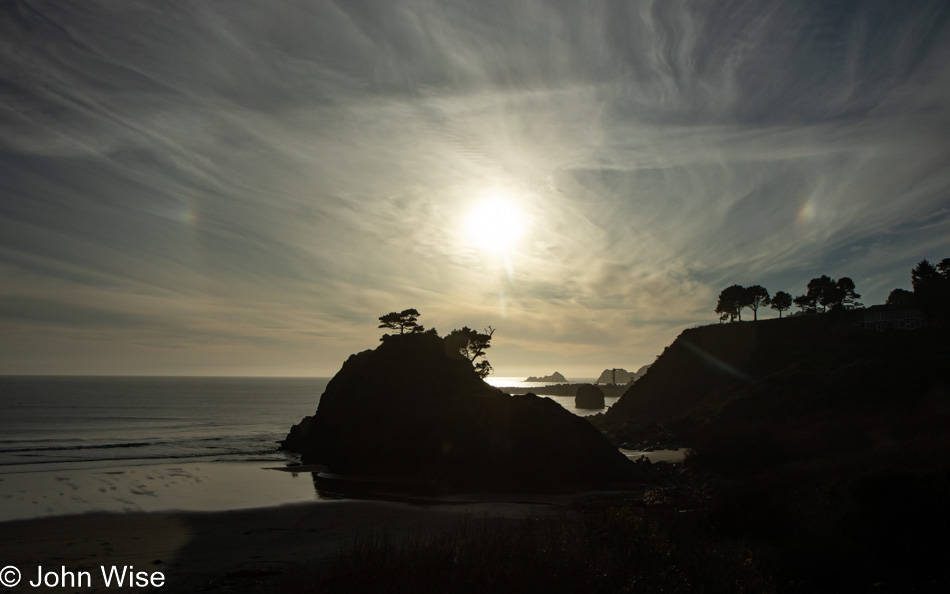
Or maybe it’ll be this reminder from Port Orford, only 62 miles from the exit from Oregon, that will produce the sigh of satisfaction that during our time here, we succeeded in seeing all the major sights during all weather conditions and variations in lighting. There’s a thought of hanging out until sunset right here, but that’s an hour away, which leaves enough time to drive another 35 miles south to capture the sun dipping below the horizon at Meyers Creek Beach near Gold Beach, where our vacation of Remote Self-Isolation began 16 days ago.

The shark tooth towers over the sand. This prehistoric fossil of an ancient predator remains as a reminder of the giants that once ruled the earth.
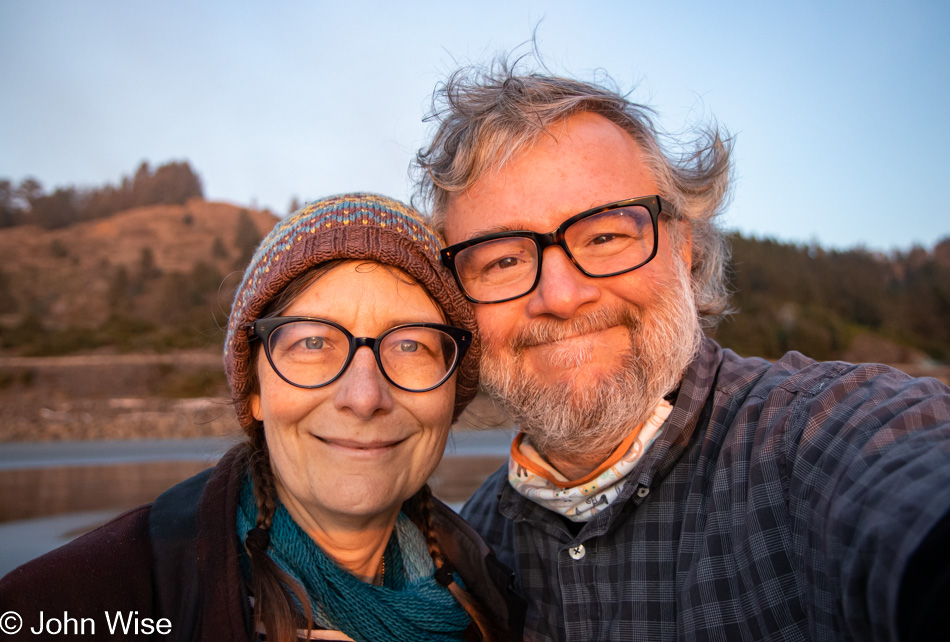
Denial is a powerful tool for remaining delusional about reality. I look at the two people in this selfie, and I know that one is approaching 60 years old and the other in her mid-50s, but I can’t help but know that their inner children are still looking out, albeit with some sense of maturity and a small amount of knowledge. Someday, we’ll likely feel old and tired; it seems to be the way of people, although there are those who just up and die, forever content that they were living with vigor until they never woke again. By the way, I know I’m an irrational romantic and that life and death are a lot messier than I choose to see them, but with time short for all things indulgent, I believe I can allow myself the opportunities when they arise to seize perfection and go with it.
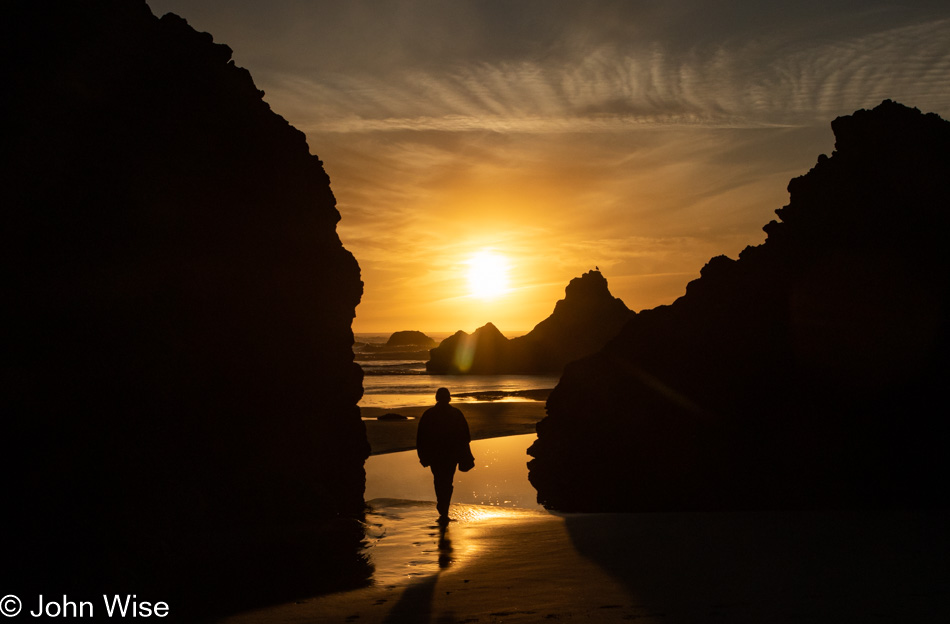
As we were walking around the base of the shark tooth and the surf pulled way out, Caroline was able to pass between it and another large rock jutting out of the sand. In the golden radiance of our setting sun, her silhouette walking through the temporary passage struck me as one of those moments of perfection where I can see her in a light that will frame her in just this way but once in my lifetime. While this is true regarding every photo I’ve ever taken of her, this adds to those treasured images of her riding the bow of a dory in the Grand Canyon, camping in the wilds of the Yukon, snowshoeing in Yellowstone, and smiling at me in her jammies while knitting a pair of socks for me late one night in a yurt just up the coast.

While the low tide is great for us who find it endearing to walk amongst the sea life that should be underwater, these barnacles might be looking forward to the return of their natural environment that has temporarily disappeared. I try imagining what it would be like if, on occasion, the air was pulled off the earth for a few hours, and we’d have to hold our breath and wait for its return. Come to think about it, I already feel this way about far too many people’s intelligence, it was pulled away and is yet to return.
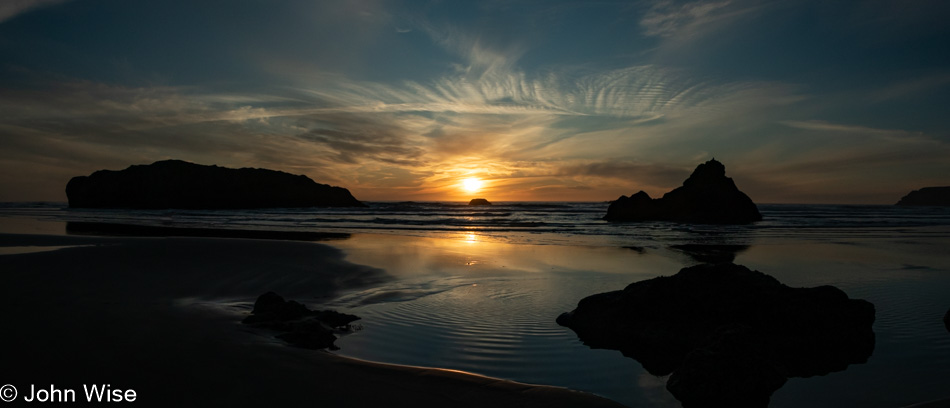
Linger to see it all. Walk around to capture every angle. The view from one location is not the same as from another.
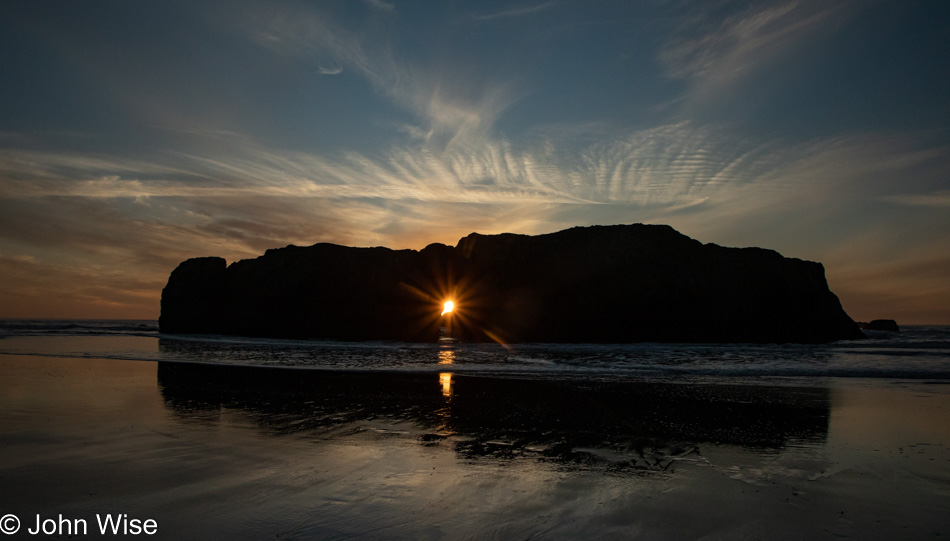
This small crack consumed the sun. We can attest to the truth of this as we were on hand to witness it fall in. How it will find its way back to us tomorrow is one of life’s mysteries. Without the benefit of our nearby star, we drove south to California finding shelter along the sea, but our hearts still walk in dreams along the beaches of Oregon.
